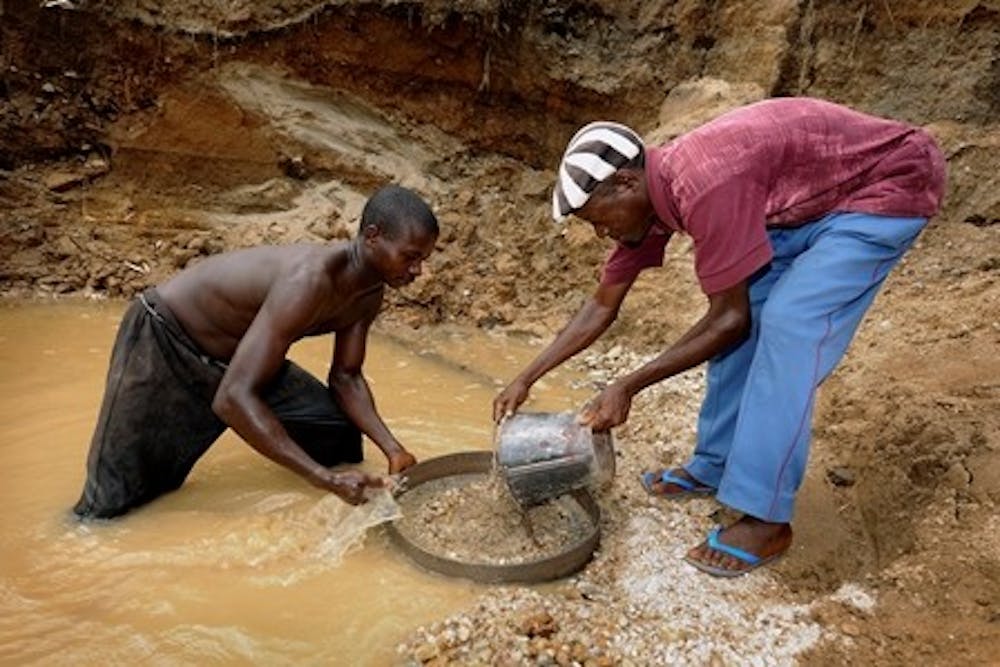As throngs of starry-eyed Americans enter jewelry stores and collectively spend billions of dollars each year on jewelry, they never stop twice to think of all the blood, pain and turmoil which their small and lovely diamond has caused. Being aware of all the strife that a simple diamond can cause in a third-world country, would Marilyn Monroe have sung about diamonds being “a girl’s best friend” so confidently?
While many may argue that conflict diamonds, otherwise known as blood diamonds, are an issue of the past, it is clear that there are many problems still inherent in the trade. A 2015 study showed that the main armed groups in the Central African Republic earn anywhere between $3 million and $6 million annually through the production of blood diamonds. While the Kimberley Process, which provides consumers with certification that their diamond is conflict free by obligating importers to meet certain requirements, has inhibited the circulation of blood diamonds, the public must be aware that this problem is far from over. However, some countries, such as Sierra Leone, Ghana and Guinea, are known to produce fake Kimberley certifications. Blood diamonds continue to cause pain — politically through the funding of rebel groups, socially through child labor exploitation and economically because the money generated only goes to a select few.
Blood diamonds derive their name from a close association with the brutal violence they fund in the third-world countries, such as Sierra Leone, Liberia, Angola, the Republic of Congo, Côte d'Ivoire, the Central African Republic and the Democratic Republic of Congo, where they are mined and traded in international markets. Many of these countries have experienced brutal civil wars in the past two decades, which were in large part funded by the sale of diamonds.
These stones are metaphorically stained with the blood of African civilians who die as a result of their production and sale. The most recent war funded by conflict diamonds was in the Central African Republic. The conflict has killed three to six thousand people and displaced 601,600 innocent people. Wars funded by blood diamonds have cost an estimated 3.7 million lives in total according to Amnesty International. Blood diamonds continue to fund rebel groups that kill civilians daily and whom continue to attack their already fragmented governments.
Blood diamonds are often mined on the backs of young children, many of who die trying to find that small diamond in the rough. These children face horrific working conditions, and more than 20,000 of them die in work-related accidents annually. Global human rights organizations, whose purpose is to try and put an end to child labor exploitation, have not done enough to stop it. For example, the World Trade Organization does not have rules in place that would effectively punish countries that violate child labor laws and directives, or otherwise engage in exploitive child labor. This is despite the fact that a staggering 246 million children experience exploitation or forced labor across all industries, and 73 million of those children are under ten years of age.
Additionally, as the demand for diamonds increase, the earth continues to be exploited. In order to mine one carat rough diamond, 1750 tons of earth has to be extracted. An excellent way to mitigate this problem are Pit lakes. Pit lakes involve filling in the mines that are no longer in use with water. The water is then able to be treated in order to inhabit wildlife, and benefit local fishermen. Diamond mines are perfect for pit lakes since they must be incredibly deep in order to excavate the illusive diamonds. Despite the all of the potential benefits of pit lakes, governments are hesitant to proceed because excessive amounts of phosphorus have made it difficult to sustain life. However, it is necessary that more solutions, like Pit Lakes, are found and improved upon to help the earth recover from diamond mining operations.
Diamonds must have an origin as pure as their appearance, in order to truly be a girl’s best friend. For the greater good of humanity, blood diamonds must no longer be circulated. The end of the production of blood diamonds will take time, and change should not be left to politicians. The burden of putting an end to blood diamonds also lies upon the shoulders of consumers. There needs to be a global movement against the exploitation of labor, and against the sale of blood diamonds. Additionally, as consumers, we must continue to inquire about the origins of all precious stones.
Izabella Forero is an Viewpoint writer for The Cavalier Daily. She can be reached at opinion@cavalierdaily.com.







